
About This Quiz
There is nothing quite like the sight of a fighter jet streaking across the sky, nearing supersonic speed!
Of course, early fighter jets were not even that fast by today's standards, but they were a huge advancement over the piston-engined aircraft of the time. The Germans showed what a threat a jet fighter could be toward the end of World War II with the Messerschmitt (Me) 262. It proved more than a match for the bombers of the U.S. Air Force as well as any fighters they encounter.
Germany just could not build them fast enough to have any serious effect on turning the tide of the war.
The German aircraft designers did introduce swept-wing designs which proved pivotal in jet fighter design. Soon everyone was copying it - the British, Americans and the Russians.
The first face-to-face action between fighter jets was reserved for the Korean War. Here, two of the most modern aircraft of the time came up against each other - the Soviet Mig-15 and the North American F-86. It remained a shootout, though, as there were no air-to-air missiles yet. When those were introduced, the game changed and today, aircraft can destroy each other without making visual contact at all.
But getting back to the quiz at hand, we'll test your knowledge of jet aircraft nicknames. Let's see how many you get!
Good luck!
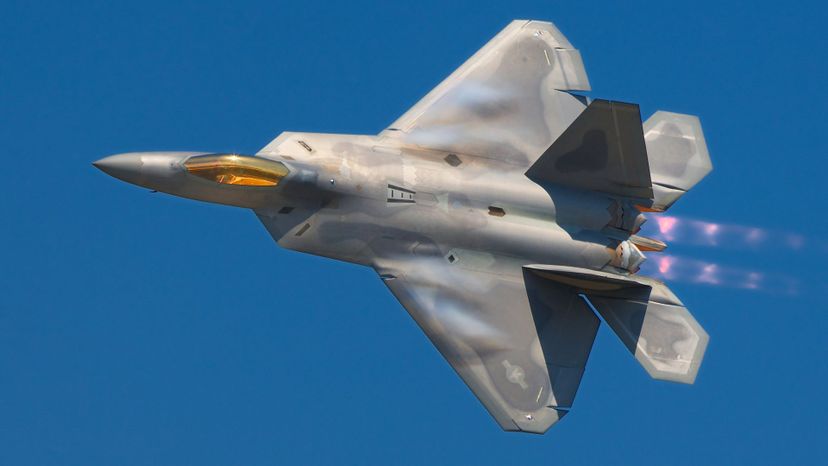
The Lockheed Martin F-22 Raptor, a fifth-generation tactical fighter with stealth capabilities, entered into service in 2005. Because of delays and higher-than-expected costs, the F-22 program was scaled back from a projected 750 to 187, with the last delivered in 2012. Resources were then shifted to the cheaper, more versatile F-35 Raptor.

The Grumman F-14 Tomcat first entered service in 1974, based first on the USS Enterprise (CVN-65). Primarily a carrier-based swing-wing fighter, the Tomcat saw service until 2006. This much-loved plane was the star of the Hollywood blockbuster Top Gun.

Perhaps one of the most famous aircraft of the Cold War era, the Lockheed SR 71 Blackbird has flown higher and faster than any military aircraft in history. A reconnaissance aircraft, the Blackbird is capable of Mach 3.32 flight and up to 85,000 ft. An armed variant was in development with a role of interceptor in mind but the project was canceled in 1968.
Advertisement

The backbone of U.S. Air Force fighter squadrons since 1976, the McDonnell Douglas F-15 Eagle is an all-weather air superiority fighter tasked with taking on counterparts in enemy air forces. Even with fifth-generation fighters coming online in the U.S. Air Force, the Eagle will remain in production till 2022.

The first ever vertical take-off and landing fighter, the BAE Harrier was a carrier-based fighter that served with the British Navy, British Air Force and the American Marine Corps. Thanks to its movable jet engine, it was particularly maneuverable and saw action during the Falklands War. The U.K. retired the Harrier from service in 2011, citing budgetary pressures. The AV-8B is still in use by the U.S. Marines, along with the Italian and Spanish navies.
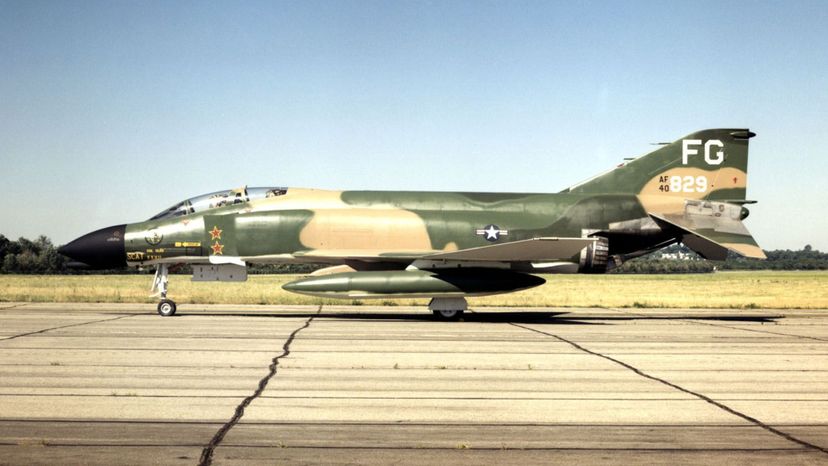
With its distinctive bent wings, the McDonnell Douglas F-4 Phantom II first entered service in 1960. Originally designed as a fighter interceptor, it also went on to be a successful ground attack aircraft. The Phantom saw extensive service during the Vietnam War.
Advertisement
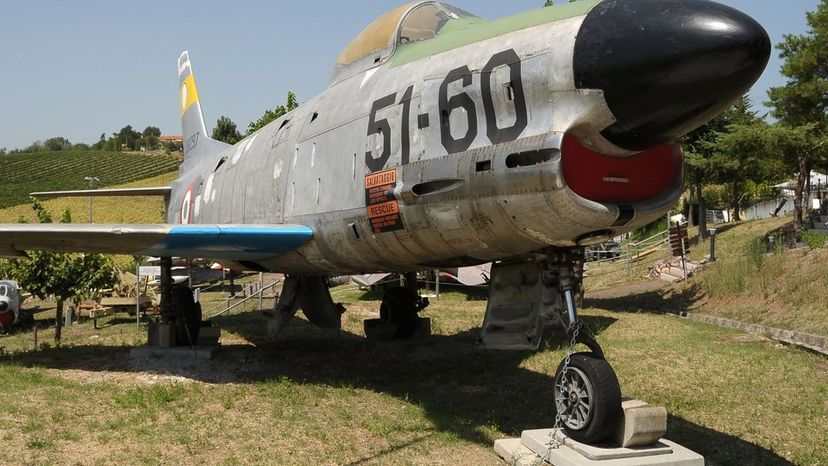
The main U.S. fighter to serve in the Korean War, the North American F-86 Sabre was designed to be superior to the Mig-15 at the time. More than 9,800 were built during its operational history, the most of any jet belonging to NATO Air Forces.

First introduced in 1956, the Douglas A-4 Skyhawk was a carrier-based attack aircraft. It remained in operations with U.S. forces for close to 50 years, seeing extensive action in Vietnam. It was capable of delivering the same bomb payload weight of a WWII-era B-17 bomber.

An interceptor, the Convair F-102 Delta Dagger first entered service in the mid-1950s and served with the United States Air Force until 1976. This was the first supersonic and delta wing fighter in the U.S. Air Force's arsenal.
Advertisement

The first American jet fighter capable of breaking the sound barrier while in level flight, the North American F-100 Super Sabre served with the United States Air Force from 1954 to 1971 and with the Air National Guard until 1979.

A carrier-capable multirole fighter, the McDonnell Douglas F/A-18 Hornet first entered service in 1984 and serves in the U.S. Navy and Marine Corps. It has a top speed of Mach 1.8 and has served in combat theatres around the world.

This modern fighter is in service with a host of European air forces including the Royal Air Force and the Luftwaffe, as well as several Middle Eastern nations. The Eurofighter Typhoon was a joint development between a number of countries. This fifth-generation delta-wing multirole fighter first entered service in 2003.
Advertisement

The Panavia Tornado entered service with a host of European air forces in 1979 and is still in service. This swept-wing jet is a multirole aircraft, with variants serving as fighter-bombers, interceptors and reconnaissance platforms.

This multirole aircraft first entered service with the U.S. Air Force in 1978. It remains in service today with more than 4,500 built. It was designed with a number of features unique to the time, including a control stick to the side of the pilot and fly-by-wire capabilities.

The Lockheed Martin F-35 Lightning II first entered service in 2015. It is a multirole fighter primarily but can be used in ground attack missions. It has stealth capability, and has three models, for land and carrier-based take-off and landing.
Advertisement

Only two examples of the McDonnell XF-85 Goblin fighter were ever produced. The idea of this small aircraft was a parasite fighter, to be carried in the bomb bay of large bombers and released when they were intercepted by enemy fighters. The Goblin would then dock with the bomber on return. The project, however, was canceled in 1949, one year after it was started.

The McDonnell F-101 Voodoo, introduced into service in the United States Air Force in 1957, was intended to be a long-range escort fighter. As with many modern designs, however, it eventually had a number of roles with the USAF and the Canadian Air Force.

Known as the Flogger by NATO, the Mikoyan-Gurevich MiG-23 first entered service in 1967. Featuring a swept-wing design, more than 5,000 have been built serving as both fighter and fighter-bombers. The aircraft is still in limited service in some countries who imported the jets.
Advertisement
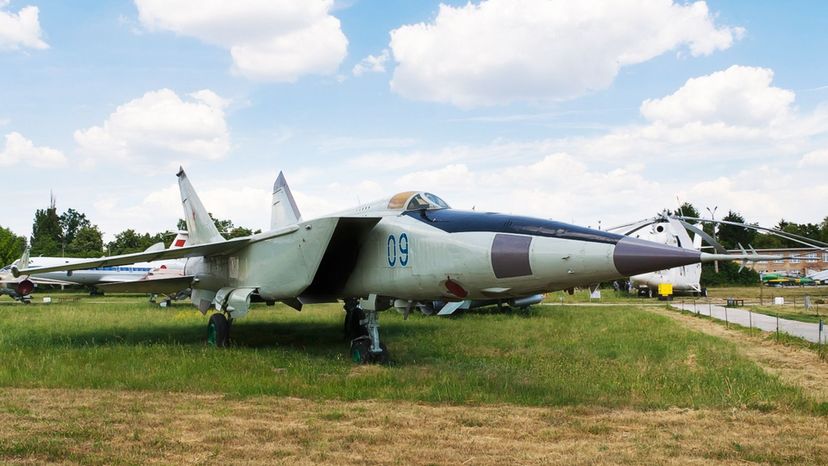
NATO codename Foxbat, the Mikoyan-Gurevich MiG-25 was used as both a fighter and reconnaissance aircraft by the U.S.S.R. It entered service in 1970 and was one of the fastest combat aircraft ever to see service. It was produced through 1984.

Introduced in 1945, the Lockheed P-80 Shooting Star was the first entry into the jet age by the U.S. military. It served at the beginning of the Korean War but was quickly outclassed by its opposition, the MiG-15 and was replaced by the F-86 Sabre. A variant, the T-33 Shooting Star, was used as a training aircraft until well into the 1980s (in fact, the last variant served until 1997).

A carrier-based fighter introduced in 1948, the McDonnell F2H Banshee served with both the U.S. Navy and Marine Corps until 1959. It was used in the Navy and Marine reserves until 1961. Banshees saw extensive action during the Korean War.
Advertisement
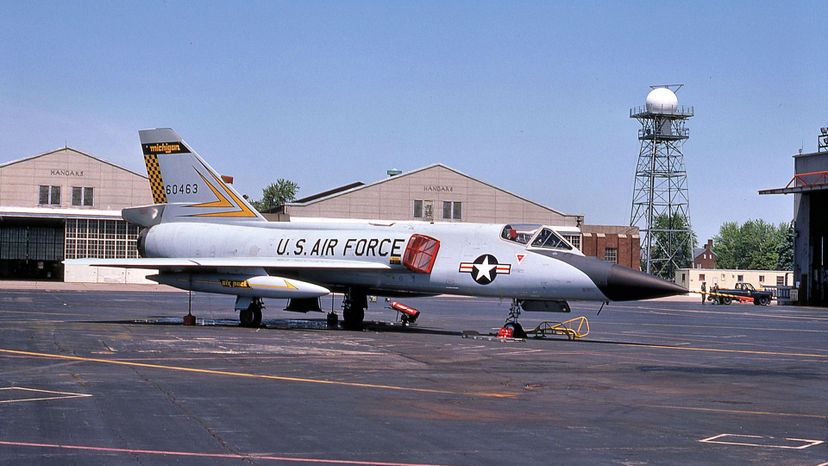
In service from June 1959 and into the 1980s, the Convair F-106 Delta Dart was an interceptor with the primary role of attacking enemy bombers. The Delta Dart was, in fact, the last true interceptor to serve the United States.

One of the world's first jet fighters to see combat, the rocket-powered Messerschmitt Me 163 Komet was introduced into the Luftwaffe in 1944. While far faster than anything the Allies had at the time, the Komet had a very limited period of powered flight. Between May 1944 and spring 1945, the Komet line had nine confirmed kills but lost 14 of its own.

Entering service in 1982, the Mikoyan-Gurevich MiG-29 Fulcrum (as it is known to NATO) is a fourth-generation fighter jet. Over the years, it has assumed a number of multirole capabilities. It is one of only a handful of aircraft in the world capable of performing the Pugachev's Cobra maneuver (where the aircraft raises its nose for a moment to the vertical position and then drops back for normal flight).
Advertisement

The first Allied jet fighter of World War II, the Gloster Meteor entered service in 1944. Although it served in Europe during the Allies push into Germany, it was mainly used for ground attack purposes and to intercept V-1 flying bombs. It never met up with any jet fighters from Germany.

A replacement for the MiG-25 Foxbat, the Mikoyan-Gurevich MiG-31 Foxhound was a very similar-looking aircraft and it too had two very powerful engines which gave it incredible performance. It came into service with the Soviet Air Force in 1981 and is expected to remain in service with the Russian Air Force until 2030 or longer.

The Sukhoi Su-47 Firkin (that's the NATO designation; it was known as the Golden Eagle in Russia) was an experimental jet fighter designed in the 1990s. It is noted for its forward-swept wings which seem to be on backward! This made it very agile at low speeds. While the project was canceled - only one was built - technology and ideas from it were used in later generations Russian aircraft.
Advertisement

The Sukhoi Su-25 Frogfoot first entered service in 1981 and primarily acts as a close support aircraft for Russian ground forces. It has seen action in numerous conflicts and currently is used in action in Syria.

This swept-wing all-weather attack aircraft first entered Soviet service in 1974 and remains in service to this day. Known by NATO as the Fencer, the Sukhoi Su-24 has seen action all over the world including Afghanistan, in Africa and currently in Syria.

The Supermarine Swift, a fighter in service with the Royal Air Force, first flew in late 1948 but wasn't entered into service until 1954. With its swept-wing design, the Swift became the fastest aircraft in the world for a brief period in in 1953 when it reached 737.7 mph (it was broken eight days later by a U.S. Douglas Skyray).
Advertisement

The Sukhoi Su-15 (NATO reporting name: Flagon) is a twin-engined jet interceptor that entered service for the Soviet Union from 1965. Its primary task was intercepting both NATO and United States bombers should the need arise.

The English Electric Lightning first entered service with the Royal Air Force in 1959 and served for nearly 30 years. An interceptor, the Lightning was tasked with quickly reaching any aircraft threatening British airspace. It was a high-performance aircraft, capable of speeds of Mach 2.0 - the only U.K.-designed-and-built fighter to be able to reach this speed.

A unique design, the De Havilland Vampire entered service with the Royal Air Force in 1946, the second jet fighter to do so. More than 3,000 were produced with the last serving till 1979 with the Rhodesian Air Force. The DH 115 is a dual-seat trainer variant of the Vampire.
Advertisement

The Messerschmitt Me 262 Schwalbe proved to be a fierce opponent for the Allies when introduced in 1944, although it had been in development since 1942. Although it's estimated that the 262s shot down more than 500 Allied aircraft, a dearth of experienced pilots, engine problems and a lack of fuel made it far less effective than it could have been.

The Mikoyan-Gurevich MiG-19 Farmer (as it was known by NATO) was a second-generation fighter introduced into service by the U.S.S.R. in 1955. Built under license in China, it was also heavily involved with the North Vietnamese Air Force during the Vietnam War. The MiG-19 was the first Soviet aircraft capable of supersonic speeds in level flight.

Although it first flew in 1990, the Sukhoi Su 34 Fullback (as it is known by NATO) has only entered service recently with the Russian Air Force. It is primarily used in a ground attack/strike role but can be used in a fighter role as well.
Advertisement

Russia's latest fifth-generation fighter, the Sukhoi Su-57 Pak Fa remains in final testing and has not yet entered service. The Su-57 is the first Russian aircraft to make use of stealth design and is expected to form the backbone of the Russian Air Force for years to come.
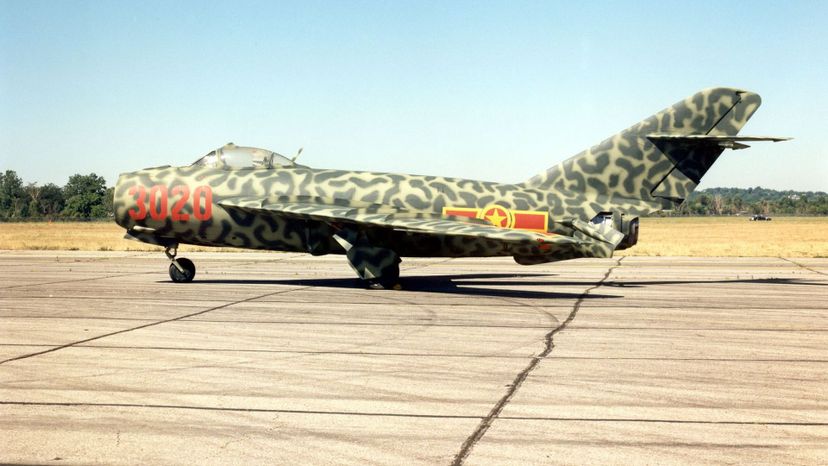
Following the MiG-15, the Mikoyan-Gurevich Mig 17 (NATO designation: Fresco) was introduced into service in 1952. It was a similar design to that of the MiG-15 but also could not reach supersonic speeds at level flight. It was also built under license in both China and Poland. While it couldn't break the speed of sound, it proved to be effective against the supersonic fighters of the time in the Vietnam War.
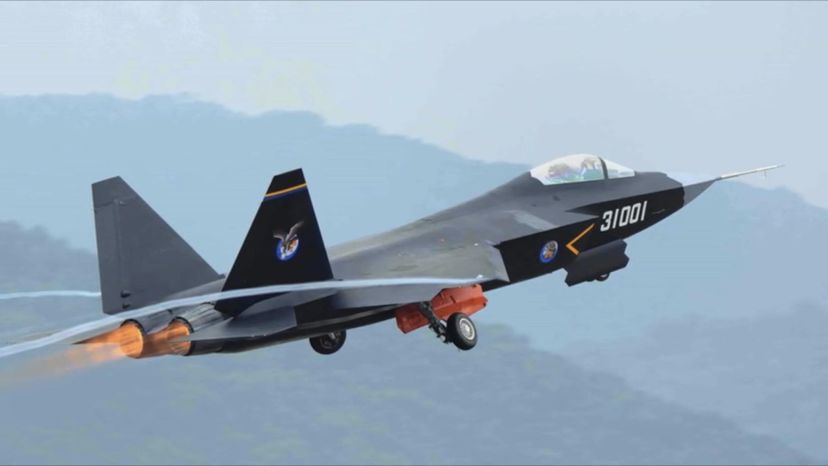
A fifth-generation Chinese fighter, the Shenyang J-31 Falcon Hawk is expected to enter service in 2019. Currently, only two are known to exist; they are involved in flight testing.
Advertisement